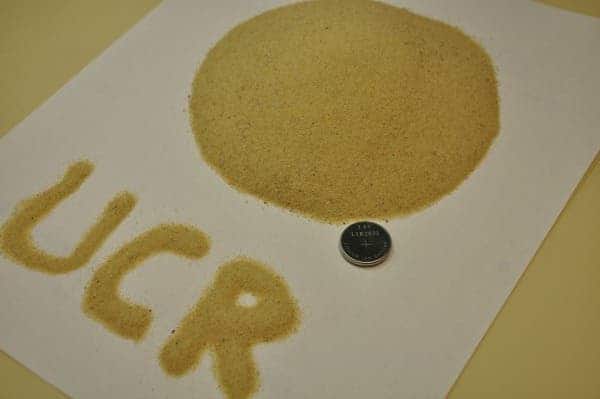
Expect the price of sand to skyrocket! Researchers at University of California, Riverside have devised a coin-sized battery that uses silicone at its anode (negative side), instead of the over-used graphite, that lasts up to three times longer than conventional lithium-ion batteries. The key of the research is the silicon extraction method which uses quartz-rich sand as the feedstock and simple, non-energy intensive chemical reactions. Previously, nanoscale silicon used in batteries was dubbed to difficult to manufacture.
While out surfing, Zachary Favors, a graduate student at UC Riverside, drew inspiration from the beach sand he was resting upon. Sand is primarily made up of quartz, or silicon dioxide, but concentrations vary depending on the deposit. Favors found a quart-rich site at the Cedar Creek Reservoir in Texas, drew same samples and enlisted the help of engineering professors Cengiz and Mihri Ozkan.
The team milled the sand until it reached the nanometer scale, before introducing the tiny granules through a series of purification steps at the end of which made them look similar to powdered sugar. The purified quartz was then mixed with grounded salt and magnesium and heated. The salt acts like a heat absorber, while the magnesium removes the oxygen from the quarts, leaving pure silicon instead. Moreover, the resulting pure silicon is in a porous state, which is ideal for use at the anode. The increased surface area allows lithium ions to travel through more quickly and close the circuit.

To test the resulting powder in an actual anode, the researchers built a coin-sized battery. Performance tests reveal the silicon-anod lithium-ion battery lasts up to three times longer than those which use graphite. This means that l-i batteries that use silicon anode might help your phone or car battery last three times longer, which is a massive improvement that could dramatically change how smartphones or electric cars are employed. Next, Favors and colleagues will built a larger battery (the size of a phone battery) and will run more extensive tests to assess life cycle and further parameters. The report was published in the journal Scientific Reports.



